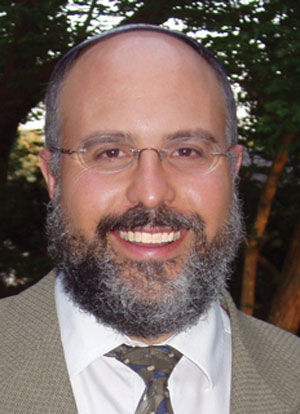Seder mirrors breakup, redemption of family
Published April 28, 2016
Passover is about relationships. Over and over, the Torah expresses the Passover Seder in intergenerationally related terms, such as: “When your child shall ask you, ‘What is this service’ ” and, “And you shall say to them, ‘With a strong hand G-d took us out from Egypt.’ ”
Our seders are held primarily in homes and involve families discussing the Exodus and eating the symbols associated with it. Without relating to another, no seder is complete. The child must ask, and the parent must answer. If there is no child, adults must ask each other. Jewish law, in fact, sees dialogue as so intrinsic to the seder that even if one is alone, that person must ask and answer the questions, creating a kind of interrelating even where there is none.
Why all this emphasis at the seder on familial relationships?
ADVERTISEMENT
Perhaps the answer lies in the nature of Passover itself. According to the Midrash, the Jewish people were enslaved in Egypt due to the sin of Joseph and his brothers. The sale of Joseph eventually resulted in, and some say was a punishment for, the exile in Egypt.
If we look closely at the Passover seder, we see that it is a reenactment not only of slavery and freedom but of the story of Joseph and his brothers that led the Jewish people to Egypt in the first place.
We begin the seder with the strange custom of dipping a vegetable into salt water. This dipping is called karpas. The word karpas means “colored cloth” (Esther 1:6). This recalls Joseph’s colored coat that his brothers dipped in goat’s blood and brought to their father when they sold him into slavery saying that he had been eaten by an animal.
In preparation for the karpas, we wash our hands but without a blessing. This looks like we are washing for bread, but we do not eat bread or matzah; it is a different kind of ritual washing than we are used to. This recalls that the first thing Joseph’s brothers did after they threw him in the pit was sit down to eat bread. They eat bread, but the Torah does not record them washing their hands, so we wash our hands, after which we do not eat bread (or matzah).
ADVERTISEMENT
We then break the matzah. Generally, the bread one blesses should be whole. On this night, we bless a broken piece. Perhaps this recalls, in addition to slavery, how that which should have been whole, the Jewish family, was broken.
We drink four cups of wine. The Talmud says that we drink four cups because when Joseph was sold into Egypt and ended up in jail, it was through interpreting the dream of Pharaoh’s wine steward that he was eventually freed from bondage, and in this dream narrative the phrase “cup of wine” is mentioned four times.
We then begin the story part of the Haggadah, which strangely does not include the verses of the story of the Exodus from the book of Exodus but instead a four sentence summary of the story of the Jewish peoples’ descent into Egypt and subsequent redemption as told by the farmer who brings his first fruits to the Tabernacle in the book of Deuteronomy.
This recitation begins, “An Aramean tried to destroy my father, and he (my father) went down to Egypt.” We usually assume this is talking about Laban the Aramean, who tried to overwork Jacob, and Jacob, who many years latter went down to Egypt.
But the word “Arami,” “an Aramean,” can also mean a “deceiver.” There was a person whom “Arameans,” that is, deceivers, tried to destroy, and then he immediately went down to Egypt, namely Joseph whose brothers deceived him and sold him into Egyptian slavery.
Perhaps, in addition to the telling of the story of the slavery and redemption, we are also telling the story of the strife among Joseph and his brothers and hoping that through bringing families and the Jewish people together in a remaking of this encounter we can create peace and ultimately undo the cause for which we went to Egypt in the first place, hatred, which is indeed the cause of all exiles.
Chag Sameach. A Happy Passover.















